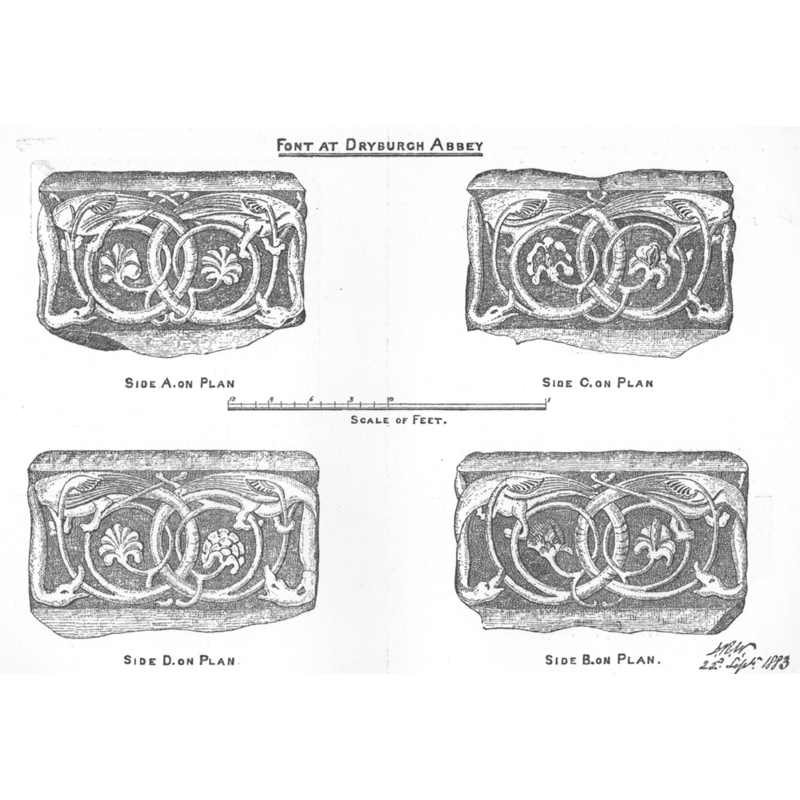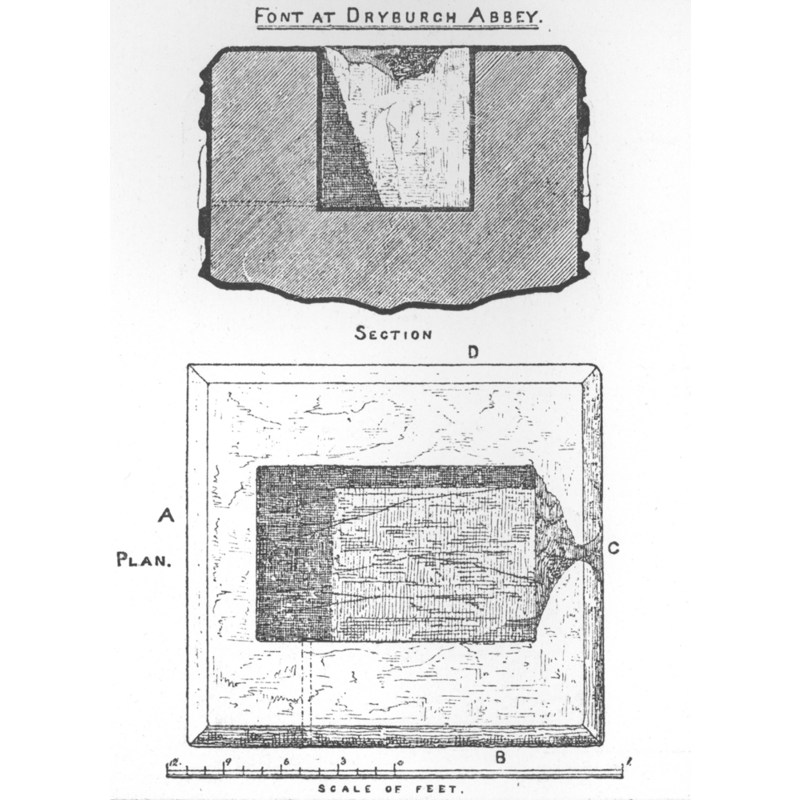Dryburgh

Image copyright © [in the public domain]
PD
Results: 5 records
B01: animal - fabulous animal or monster - dragon - 2
B02: design element - motifs - foliage - in a circle - 2
B03: design element - motifs - floral - flower
B04: design element - motifs - leaf
INFORMATION
FontID: 00930DRY
Object Type: Baptismal Font1
Church/Chapel: Dryburgh Abbey
Country Name: Scotland
Location: Scottish Borders
Directions to Site: Located W of the Eildon Hills, about 14 km EES of Galashields (10 km E on the A6091 to the A68, then 3-4 km S in the direction of Jedburgh)
Font Location in Church: Reported ca. 1887 in the ruined cloisters of the abbey
Century and Period: 12th - 13th century, Transitional
Church Notes: The abbey was reported in ruins ca. 1887
Font Notes:
Click to view
Described and illustrated in Walker as "a very beatiful example of Transitional Norman date" and, to him, there is no other example in Scotland of this early date that can compare with it in beauty and design. Each side is richly ornamented with interlaced and foliated dragons raised above the surface; the winged bodies occupy the upper portions and the thickest parts of the serpent-like portions intertwine in the centre of each side [...]". Framed by these dragons, the rest of the basin sides is occupied by a double roundel of foliage, each ending in a leaf or flower. Walker reports the drain as being in the side and has been closed from the outside. Only the basin remains, the lower part with some damage showing. Walker (ibid.) described the material as "hard grey freestone" and reports the carving "on most of the faces being still crisp and sharp", but complains that "this fine font stands at present [ca. 1887] in the ruined cloisters of the abbey, exposed to wind and weather. It seems a pity such a fine piece of work should be allowed to remain outside, and it is to be hoped it will shortly be placed under cover in some secure and dry situation." (ibid., p. 365, 367)
COORDINATES
Church Latitude & Longitude Decimal: 55.575411, -2.648937
Church Latitude & Longitude DMS: 55° 34′ 31.48″ N, 55° 34′ 31.48″ N
UTM: 30U 522134 6158882
MEDIUM AND MEASUREMENTS
Material: stone, Freestone (grey)
Number of Pieces: one
Font Shape: rectangular
Basin Interior Shape: rectangular
Basin Exterior Shape: rectangular
Rim Thickness: 12-14 cm
Diameter (inside rim): 36 x 22.5 cm
Basin Depth: 22 cm
Basin Total Height: 32.5 cm
Trapezoidal Basin: 60 x 50 cm
Notes on Measurements: Walker (1887: 367)
REFERENCES
Walker, J. Russell, "Scottish Baptismal Fonts", 21 or N.S. 9, Proceedings of the Society of Antiquaries of Scotland, 1887, pp. 346-448; p. 362-367 and ills. on p. 365, 366
